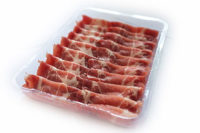Packaging Technology
Cost, performance remain challenges in developing truly sustainable packaging

Examining the status of sustainable packaging can be tricky. The term itself has become a throw-around, and volumes could be written trying to come up with some kind of common definition.
So let’s cut to the chase and try to look at this from the user’s perspective, and treat sustainable packaging like any other. At the end of the day, adoption usually comes down to a business decision. Can the package make a difference and have a positive impact on the product and the business?
The biggest concerns about packaging today are the same they have been for years: How much does it cost and how does it perform? Historically, sustainable packaging has been challenged living up to both. In part, this has contributed to difficulty establishing a broad enough application space to be perceived as having staying power by the marketplace. However, today sustainable packaging — or, more specifically, packaging with a high percentage of renewably sourced starch content — seems poised to have an impact in high-value applications that require high gas barrier.
For modified-atmosphere and vacuum applications where extending products’ freshness is crucial, renewably sourced packaging claims to outperform EVOH as a gas barrier. High barrier seems to be a natural property of the starch. Shelf-life extensions of from 15 percent to 40 percent for fresh meat are claimed to be achievable, depending on the application. This could be significant in a business where just an extra day in the retail display case can contribute greatly to revenues.
Because up to 80 percent of the total films’ structures are reported to contain renewable content, down gauging, without compromising the effective barrier, becomes a very real option. Here, sustainability is served again from another aspect, reducing the amount of packaging material used. Price is also addressed because thinner material is less costly. Additionally, much of the starch is from corn and, according to sources, corn as a feedstock is less sensitive to price swings than the traditional ethylene-based polymers which creates greater stability in its pricing. In this instance, price competitiveness may actually be a promise with teeth.
The strong barrier performance is commercially available in several common packaging formats including roll stock, and rigid and semi-rigid trays, according to marketing materials. One caveat: Sources say there are no bio-based lidding films commercially available at this time.
Unfortunately, users expecting to build a marketing message around recyclable packaging with high renewable content will be disappointed. These materials are not widely recyclable because the process to separate the core from skin layers of traditional petroleum-based polymers has not been developed.
If its claims play out, renewably sourced packaging may have found a space for itself in the high-barrier market. I asked what the next big thing could be and was told if the heat stability of renewably sourced materials could be amped up and stabilized, microwavable and retort applications could be the next new market spaces. We’ll have to stay tuned for that.
Looking for a reprint of this article?
From high-res PDFs to custom plaques, order your copy today!







